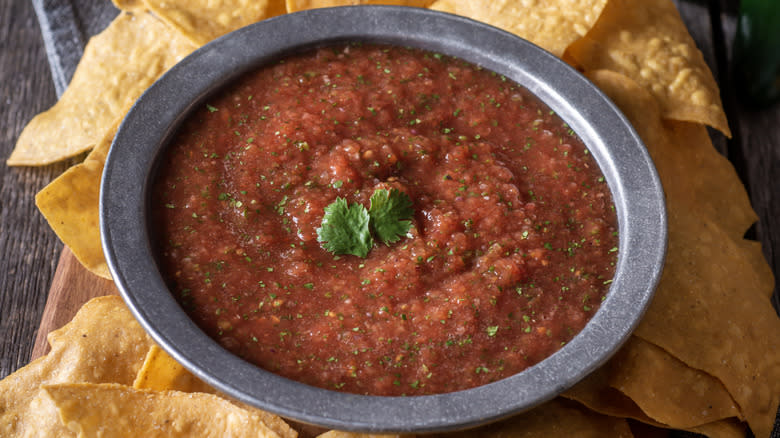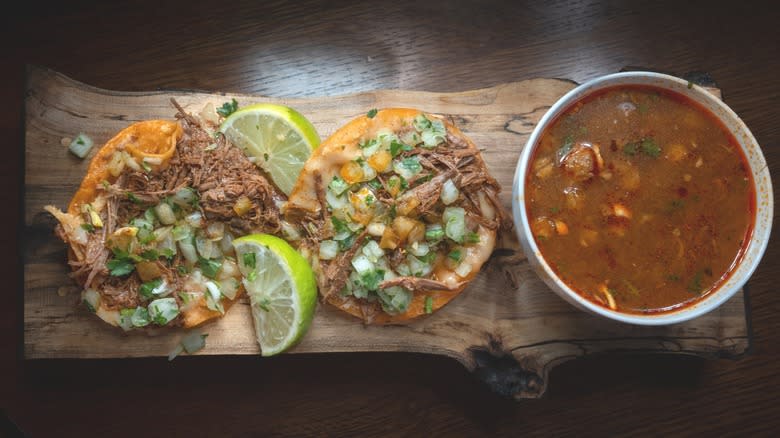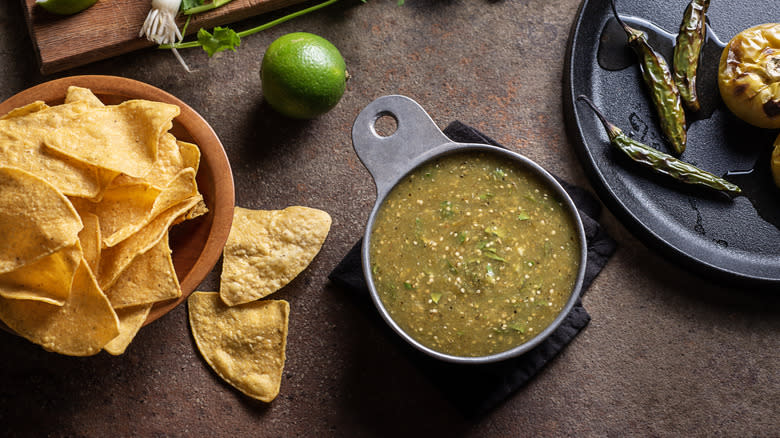Courtney Brandt
·3 min read
Ah, salsa. The vibrant, chunky, spicy (or not-so-spicy) dip that graces tables across the globe. While you might feel that restaurant salsa tastes better than homemade, do you ever wonder what exactly "restaurant-style" means? Fear not, salsa sleuths; it's time to get into the mysteries of restaurant-style salsa, separating fact from flavor-enhancing fiction (and perhaps even a few tips to create your best homemade salsa).
Firstly, let's dispel the myth that "restaurant-style" equates to some secret, guarded family recipe passed down through generations. While some restaurants might have unique twists, the core principles of restaurant-style salsa are approachable and not too difficult to unpack. To start, the term "restaurant-style salsa" does not refer to a singular recipe but instead encapsulates a set of characteristics that define the salsa typically served in restaurants, which sets the recipes apart from homemade or store-bought alternatives. It's not a rigid formula but one that emphasizes texture, balance of flavors, freshness, consistency, and versatility. Altogether, this defines what most of us recognize as the quintessential salsa experience in restaurants.
Read more: Restaurant Foods That Always Taste Better Than What You Make At Home
Restaurant-Style Salsa Prioritizes Freshness
In general, restaurants aim to deliver a consistent experience to their customers across all of their dishes. As such, restaurant-style salsa is often made following a standardized recipe to ensure uniformity in flavor and texture across different batches. Whether served as an appetizer with tortilla chips, alongside tacos or as a topping for grilled meats, restaurant-style salsa is designed to complement a wide array of dishes.So, the next time you savor the zesty goodness of salsa at your favorite eatery, remember that it's not just a condiment but a chance to provide a taste truly original to the restaurant.
ADVERTIsem*nT
While some restaurant-style salsas may be prepared in large batches to meet demand, the emphasis on using fresh, high-quality ingredients remains a constant, no matter the quantity. A unique blend of fresh tomatoes, onions, cilantro, and lime juice contributes to the vibrant, lively taste of restaurant-style salsa. Additionally, restaurant-style salsa often has a vibrant, almost "glistening" quality, achieved by using high-quality ingredients and perhaps garnishing the finished product with a sprinkling of fresh cilantro or even a drizzle of olive oil.
The Little Things Matter When Making Salsa
So, are you ready to make your own restaurant-style salsa at home? This salsa often boasts a smoother texture, which is achieved by blending or finely dicing the ingredients. A quick pulse in a food processor breaks down the tomatoes while leaving some delightful chunks of onion, pepper, and herbs for satisfying bites. Achieving a harmonious balance of flavors is also crucial. Combining sweet, savory, spicy, and tangy elements should be well-calibrated, ensuring no single flavor dominates. While canned tomatoes can be used in a pinch, restaurant-style salsa generally leans towards the fresh side. Be sure to choose juicy ripe tomatoes, vibrant cilantro, and crisp onions. Jalapenos are a common addition, but their spiciness can be tempered by a squeeze of lime. Cumin and garlic add warmth and depth, while a touch of sugar rounds out the acidity.
So, can you achieve restaurant-style salsa glory at home? Absolutely! With this newfound knowledge, you can experiment with different ingredients and textures, finding your perfect balance of fresh, spicy, and flavorful. Remember, taste as you go, adjust seasonings, and don't hesitate to get creative. The next time you crave that restaurant-style magic, skip the takeout menu and unleash your inner salsa chef. With a bit of practice, you'll be whipping up batches that rival your favorite taqueria, proving that deliciousness doesn't have to be outsourced.
Read the original article on Tasting Table.


